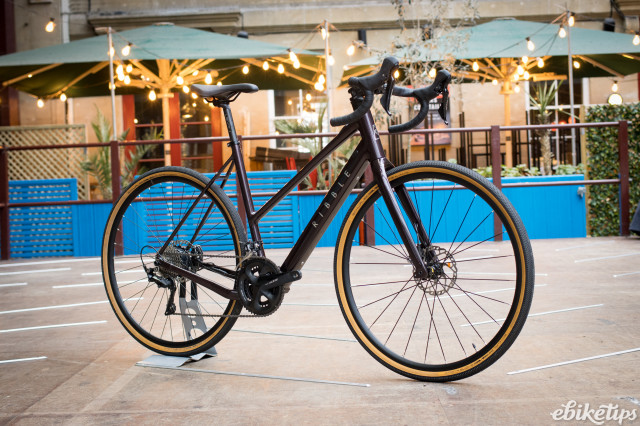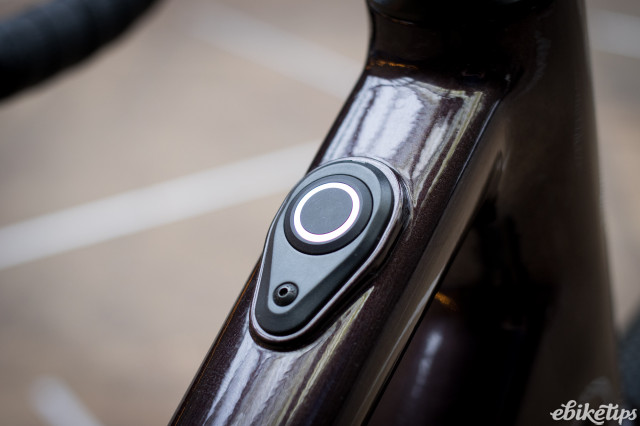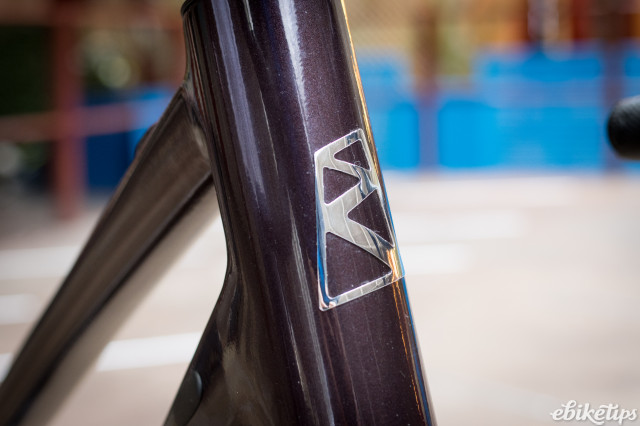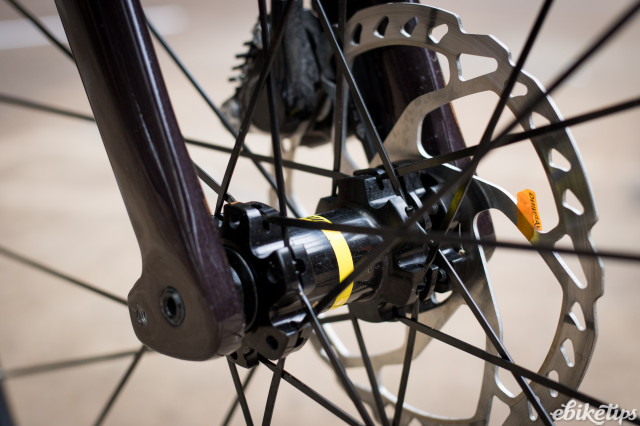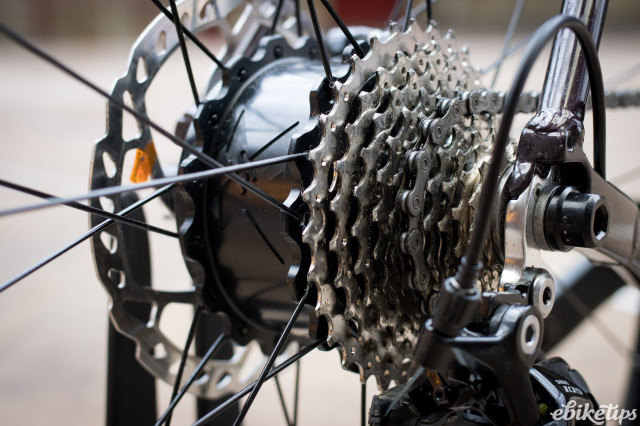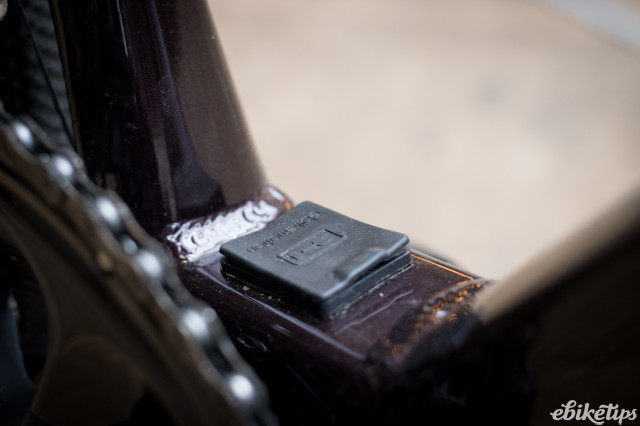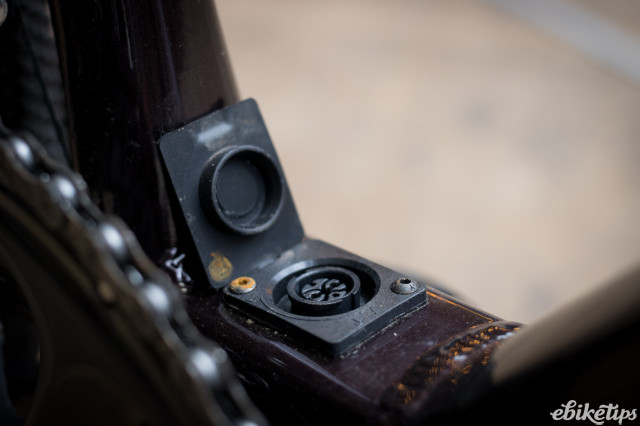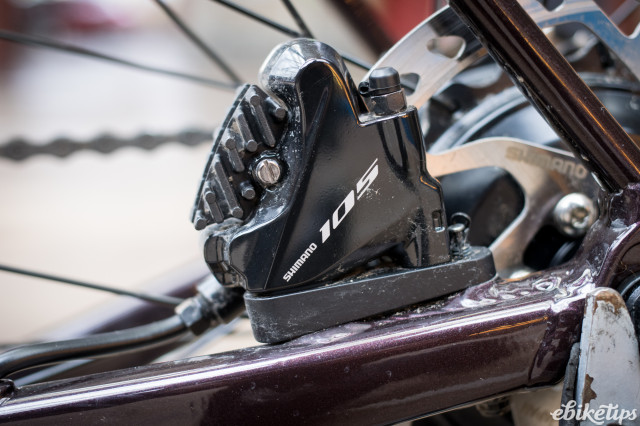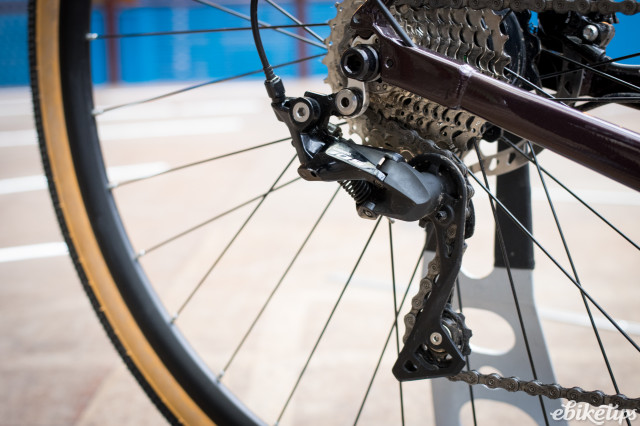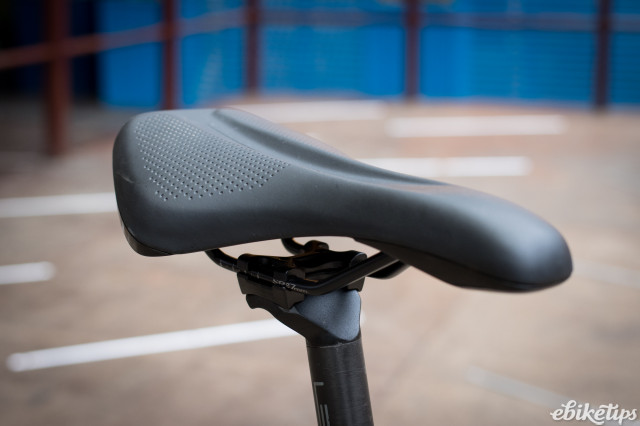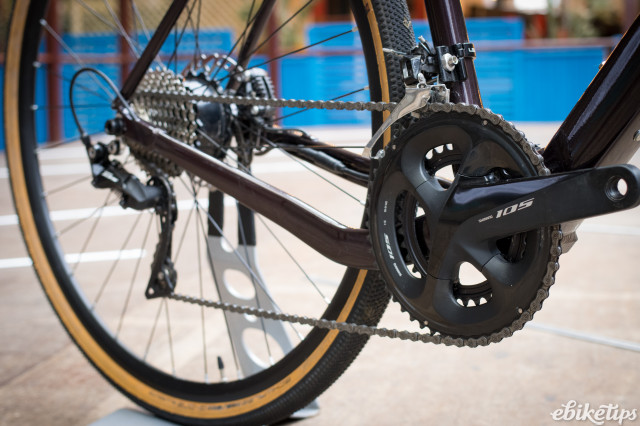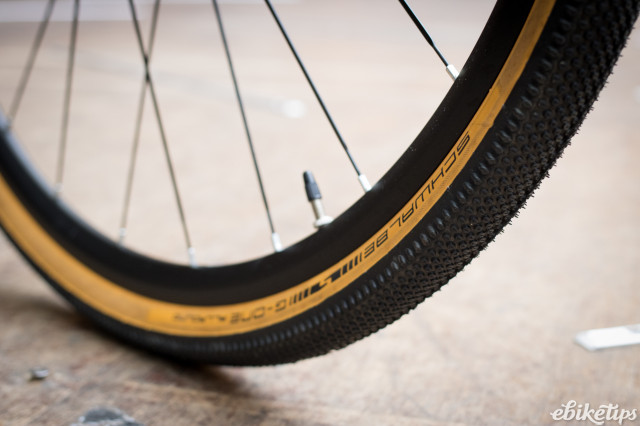Ribble CGR AL e Step Through Enthusiast – Shimano 105
Overview
- Very impressive range
- Smooth, natural pick-up from the motor
- Quality components with custom kit options
- Lacks oomph for steep climbs
- Slightly awkwardly placed button
- I wasn't keen on the bar or bar tape
Ribble's CGR AL e Step Through is one of the modern generation of e-bikes that doesn't shout that it has an electronic heart. It's powered by a MAHLE ebikemotion X35 36V/250Wh motor neatly housed in the rear hub, which delivers 40Nm of torque. This is the same system used by the likes of Merida, Orbea, Lapierre, Cannondale among others, which should ensure its long-term viability.
The CGR's battery is fitted in the down-tube and can't be taken out to be charged. Instead there's an unobtrusive charging port over the bottom bracket, with a rubber seal to keep the elements out. I found this secure but it is worth checking before and after every ride.
The power button is on the top-tube, which means you do have to take your hands off the bar to use it. The motor is brought into play by a PAS sensor in the freewheel, which senses speed quickly and picks up your pedalling action almost immediately. As with all European e-bikes, the CGR's assistance is limited to a maximum of 25kph. The motor offers three levels of assistance, which I found satisfactory though you can also customise these using MAHLE's app – even in real time. The app also allows you to record and upload your rides and export them as GPX or KML files.
The top-tube button also doubles as a battery level indicator: white shows there's more than 75 per cent capacity remaining, green 50-75 per cent, orange 25-50 per cent, red 15-25 per cent, slow red flash 10-15 per cent, rapid red flash less than 10 per cent.
The first thing that you notice when riding the CGR is just how quickly the motor senses you're pedalling, and how little torque you have to generate through the pedals for it to engage. This makes it really useful when you're stopped on a hill or waiting at a give way in the wrong gear. Or after an emergency stop when a ginger and white cat lazily crosses your path on the Bristol-Bath bike path. Pretty much whatever gear you're in, the start is smooth and progressive and you never need to put much torque through the pedals, which is great for your knees.
Once you are up and running the motor is like a royal butler – always offering a helping hand when you want it. It's at its best when you're spinning along at around 18-22kph, with 20kph or so a real sweet spot – it was only after testing it that I read that MAHLE designs its motor for just this sort of riding.
You'll need assistance level 2 for moderate climbs and level 3 when you hit inclines over six per cent or so, but the motor does struggle when you reach 10 per cent or so. If a lot of your riding is over more challenging terrain you are going to need a bike with more 'oomph' – the Si unit for e-bike grunt – or, more seriously, the greater torque created by a 80Nm motor. But with that proviso in mind, there was otherwise very little to fault when it came to the CGR's electrical assistance.
And it's quiet too. Not quite silent, but you're unlikely to hear the motor over traffic or even wind noise at the lowest power output. Use the higher power settings and it's like the sound of quiet underground train.
The battery only takes three hours or so to charge from flat (not that you should ever drain it entirely; we did this for test purposes). On a single charge, trying to maximise distance by keeping the route flat, I managed 90.2km at an average speed of 19.5kph. But even this apparently flat route encompassed enough slopes and false flats to add up to 366 climbing metres. The battery provided power for 23km of riding in the orange zone and another 10km on red, before the button started blinking red.
On rides with around 750-800 metres of climbing, regularly using assistance levels 2 and 3 on the steeper sections, I was still able to achieve well over 70km. Your own mileage will vary, of course, but this Ribble also tackled every surface I could throw it at, from smooth tarmac to country lanes and a very muddy canal towpath.
One flipside of the motor's very quick take-up is that it also stays running for a few metres when you stop pedalling. So if you're riding uphill towards a give way, for example, then you need to stop pedalling a little before you otherwise would. Likewise, when you're negotiating very slow-speed U-turns or weaving through bike-calming street furniture – on bike-legal routes – even the merest pressure on the pedals can bring the motor to life. Again, just be aware and take care.
Our CGR came with a Shimano 105 groupset, and both the gears and hydraulic brakes were excellent. In fact kit choice throughout was pretty much exemplary, with Mavic tubeless-ready Ksyrium S-Disc wheels and quality Schwalbe G-One tyres that run well on and off-road. Great braking and good tyres means you can really hit decent speeds on descents, where the CGR handles exactly like a quality road bike.
I didn't notice the Selle Royale Vivo Ergo saddle at all, which with a new bike is about as good a recommendation as there is, and the 27.2mm carbon seatpost helps with comfort. The only component I didn't get on with was the handlebar, which has tops that measure little more than 20mm front to back. I'd splash out an extra £20 on Ribble's Bike Builder for a bar with flattened tops for a more comfortable handhold. Plusher bar tape would have been nice, too, but these are small gripes.
The CGR's step-through frame shouldn't be seen as a design purely for female riders – it can be a boon for many of us. I'm 58 and after a lifetime of running, triathlon and football – including as a decidedly so-so defender in front of ebiketips' own Dave Atkinson – both my knees have had the attention of a surgeon's scalpel. Sometimes after a long ride under my own steam even getting off a bike can be a real effort – hence the appeal of the CGR's step-through frame. Both the frame and fork have fittings and clearance for mudguards, and the seatstays have bosses for a rack, adding to the CGR's all-round credentials.
If you're on a budget and maximising your range is crucial to you, it might be worth considering the Sport-level Shimano Tiagra-equipped CGR AL e Step Through. This costs £2,399 and you could put the money saved towards an eBikemotion Range Extender battery for £549.99, which nearly doubles capacity to 456Wh and adds a claimed 70 per cent to your range. This could make journeys of up to 160km or so a reality.
There are a very few things I'd change on this CGR, probably just the handlebar and tape. The bike handles very well, the electrical assistance is smooth and quiet, the range impressive. It doesn't have the power for double-digit inclines but for just about every other situation it's a very, very good call if you're looking for a step-through electric road bike with drop bars.
1 comments
Its not clear from the review what happens when the battery finally dies for good. Is it user or dealer replaceable?
